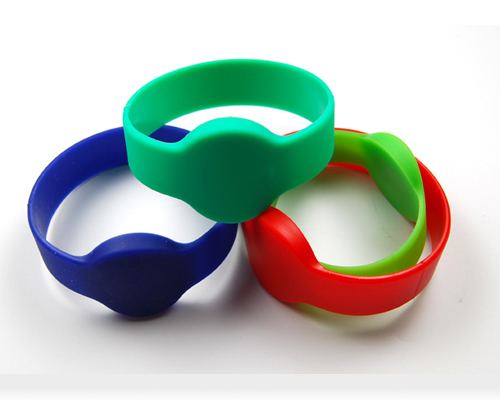RFID is already in use all around us. Ever chipped your pet dog or cat with an ID tag? Or used an EZPass through a toll booth? Or paid for gas using ExxonMobils’ SpeedPass? Then you’ve used RFID.
Some uses, especially those related to security, seem like a great idea. For instance, Delta is testing RFID on some flights, tagging 40,000 customer bags in order to reduce baggage loss and make it easier to route bags if customers change their flight plans.
Three seaport operators – who account for 70% of the world’s port operations – agreed to deploy RFID tags to track the 17,000 containers that arrive each day at US ports. Currently, less than 2% are inspected. RFID tags will be used to track the containers and the employees handling them.
The United States Department of Defense is moving into RFID in order to trace military supply shipments. During the first Gulf War, the DOD made mistakes in its supply allocation. To streamline operations, the U.S. military has placed RFID tags on 270,000 cargo containers and tracks those shipments throughout 40 countries.
On a smaller level, but one that will instantly resonate with security pros, Star City Casino in Sydney, Australia placed RFID tags in 80,000 employee uniforms in order to put a stop to theft. The same idea would work well in corporate PCs, networking equipment, and handhelds.
In all of these cases, RFID use seems reasonable. It is non-intrusive, and it seems to balance security and privacy. Other uses for RFID, however, may be troublesome.
Visa is combining smart cards and RFID chips so people can conduct transactions without having to use cash or coins. These smart cards can also be incorporated into cell phones and other devices. Thus, you could pay for parking, buy a newspaper, or grab a soda from a vending machine without opening your wallet. This is wonderfully convenient, but the specter of targeted personal ads popping up as I walk through the mall, a la Minority Report, does not thrill me.
Michelin, which manufactures 800,000 tires a day, is going to insert RFID tags into its tires. The tag will store a unique number for each tire, a number that will be associated with the car’s VIN (Vehicle Identification Number). Good for Michelin, and car manufacturers, and fighting crime. Potentially bad for you. Who will assure your privacy? Do you really want your car’s tires broadcasting your every move?
The European Central Bank may embed RFID chips in the euro note. Ostensibly to combat counterfeiters and money-launderers, it would also enable banks to count large amounts of cash in seconds. Unfortunately, such a move would also makes it possible for governments to track the passage of cash from individual to individual. Cash is the last truly anonymous way to buy and sell. With RFID tags, that anonymity would be gone. In addition, banks would not be the only ones who could in an instant divine how much cash you were carrying; criminals can also obtain power transceivers.
Several major manufacturers and retailers expect RFID tags to aid in managing the supply chain, from manufacturing to shipping to stocking store shelves, including Gillette (which purchased 500 million RFID tags for its razors), Home Depot, The Gap, Proctor & Gamble, Prada, Target, Tesco (a United Kingdom chain), and Wal-Mart. Especially Wal-Mart.
The retail giant, the largest employer in America, is working with Gillette to create “smart shelves” that can alert managers and stockboys to replenish the supply of razors. More significantly, Wal-Mart intends for its top 100 suppliers to fully support RFID for inventory tracking by 2005. Wal-Mart would love to be able to point an RFID reader at any of the 1 billion sealed boxes of widgets it receives every year and instantly know exactly how many widgets it has. No unpacking, no unnecessary handling, no barcode scanners required.






